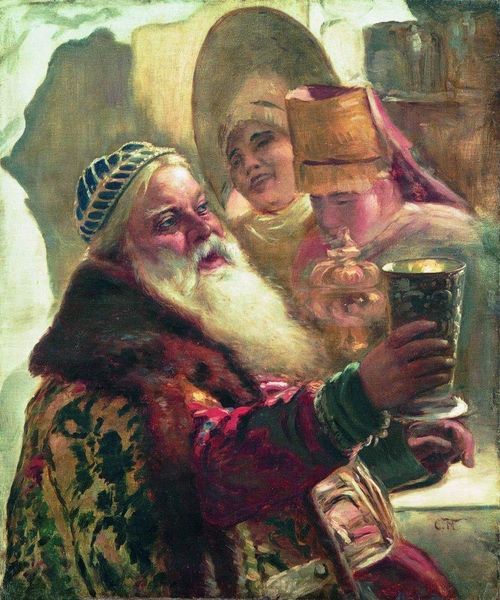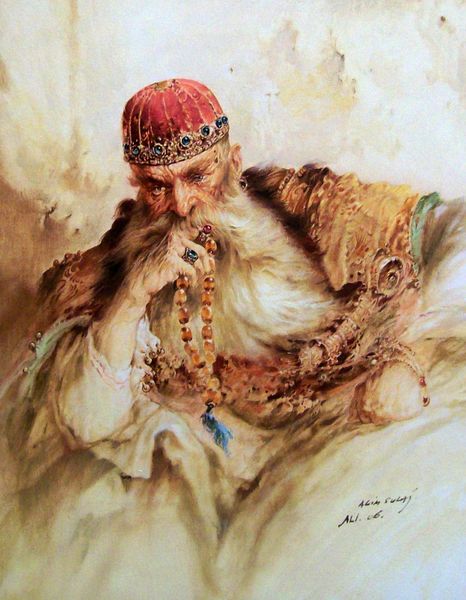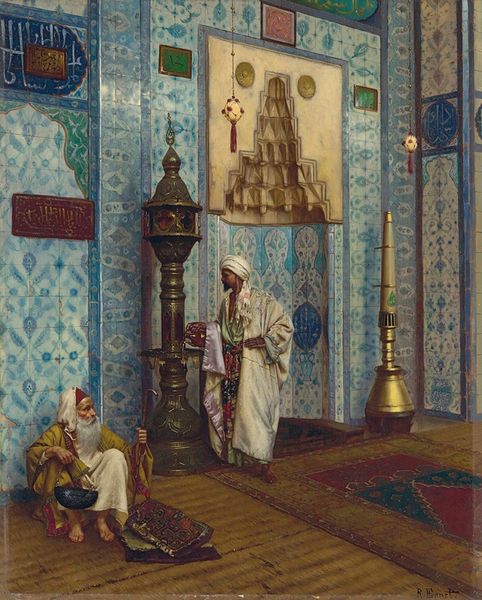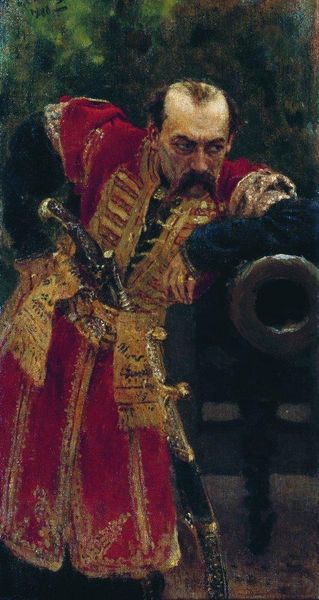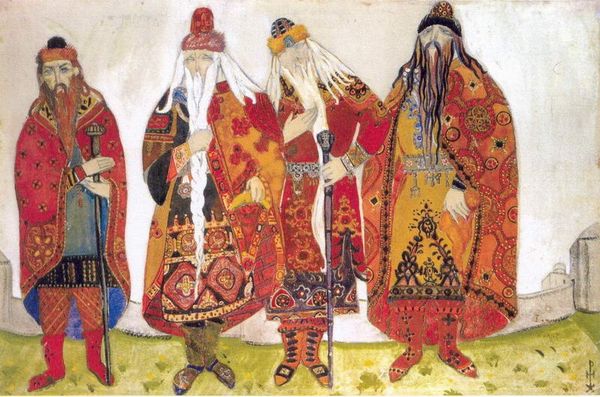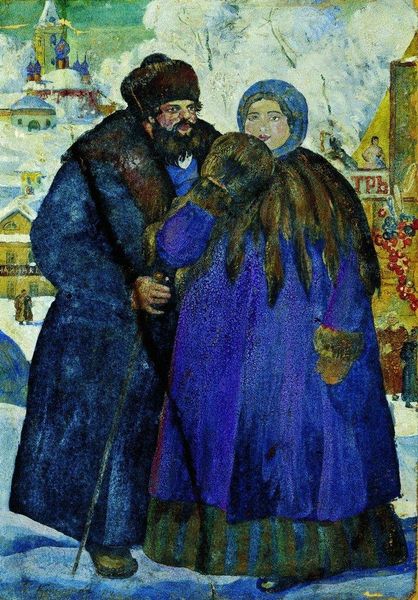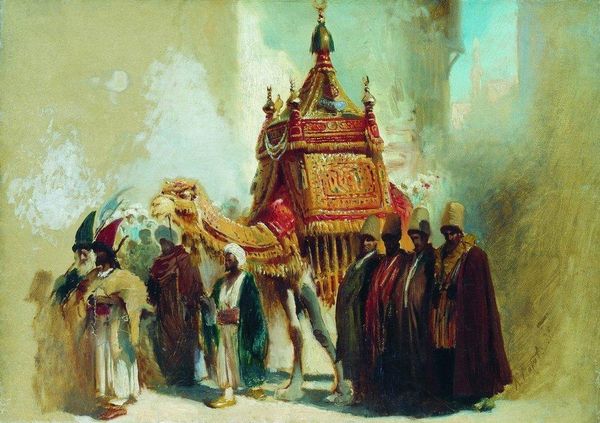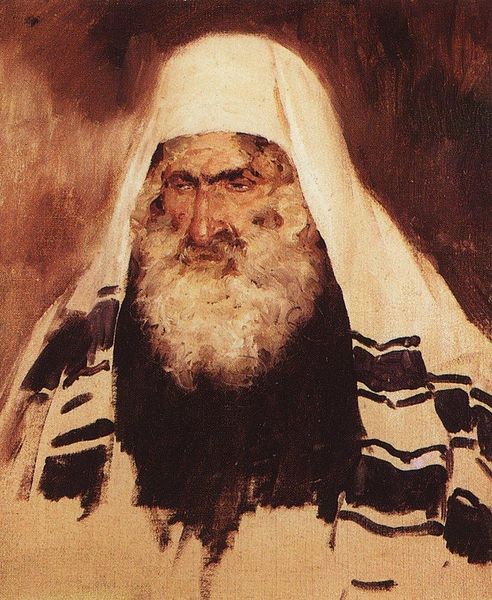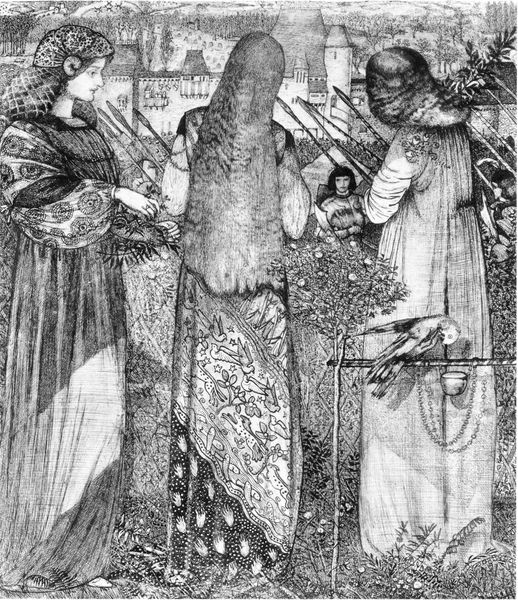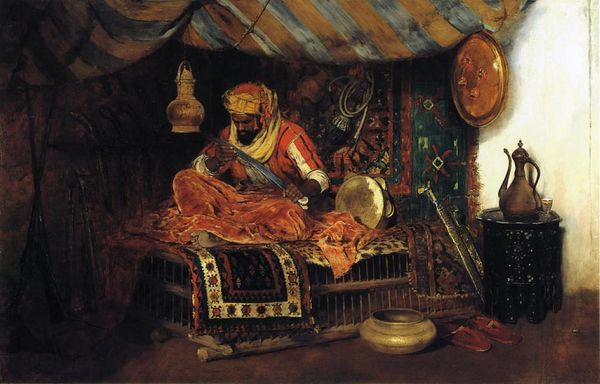
Copyright: Public domain
Konstantin Egorovich Makovsky painted this portrait of Prince P. Vyazemsky in oil, but its exact date remains a mystery. This is a depiction of aristocratic revelry, full of traditional Russian clothing, drinking vessels, and what appear to be serving staff or entertainers looking on. But is Makovsky offering a neutral depiction of Russian culture, or is he critiquing its rigid social hierarchy? The figure of the Prince is presented as central and important, and his clothing and goblet are finely detailed, yet there is something in the looseness of Makovsky's brush strokes that implies satire. When considering social conditions that shape artistic production, we might ask how artists in Tsarist Russia were dependent on commissions from wealthy aristocrats like Vyazemsky. What were the social expectations for painters working in this period? To understand the context, we need to look at Russian social history. The study of estate papers, personal letters, and the account books of artists and patrons can offer valuable insights. The meaning of this painting lies in that combination of historical context, and our own contemporary viewing.
Comments
No comments
Be the first to comment and join the conversation on the ultimate creative platform.
